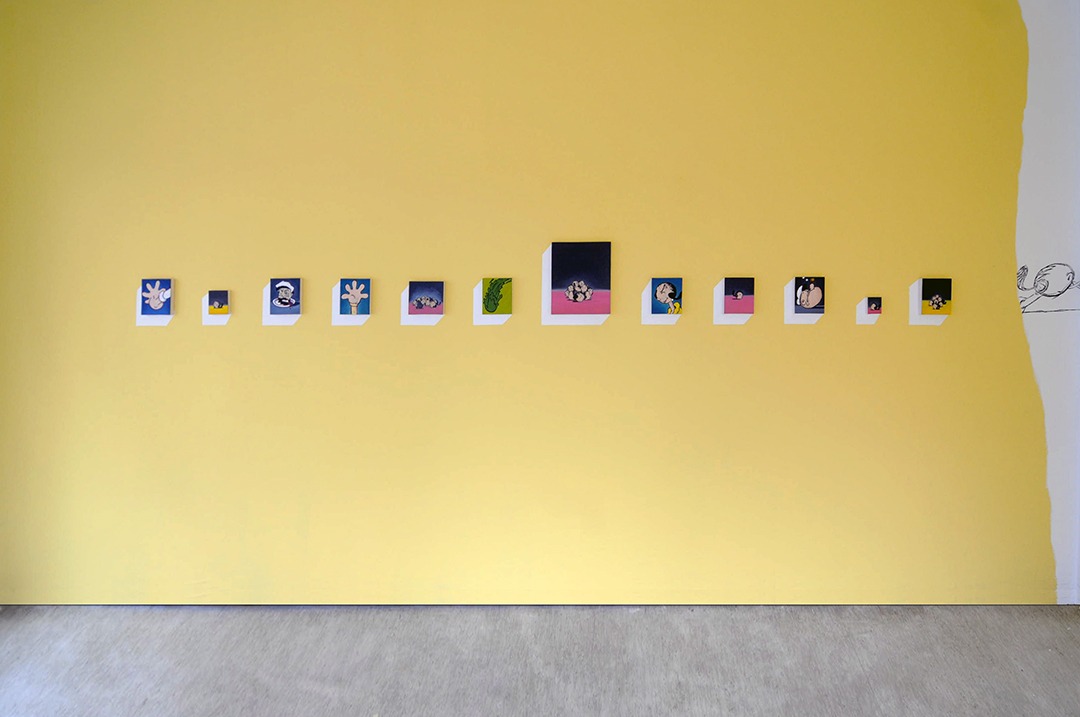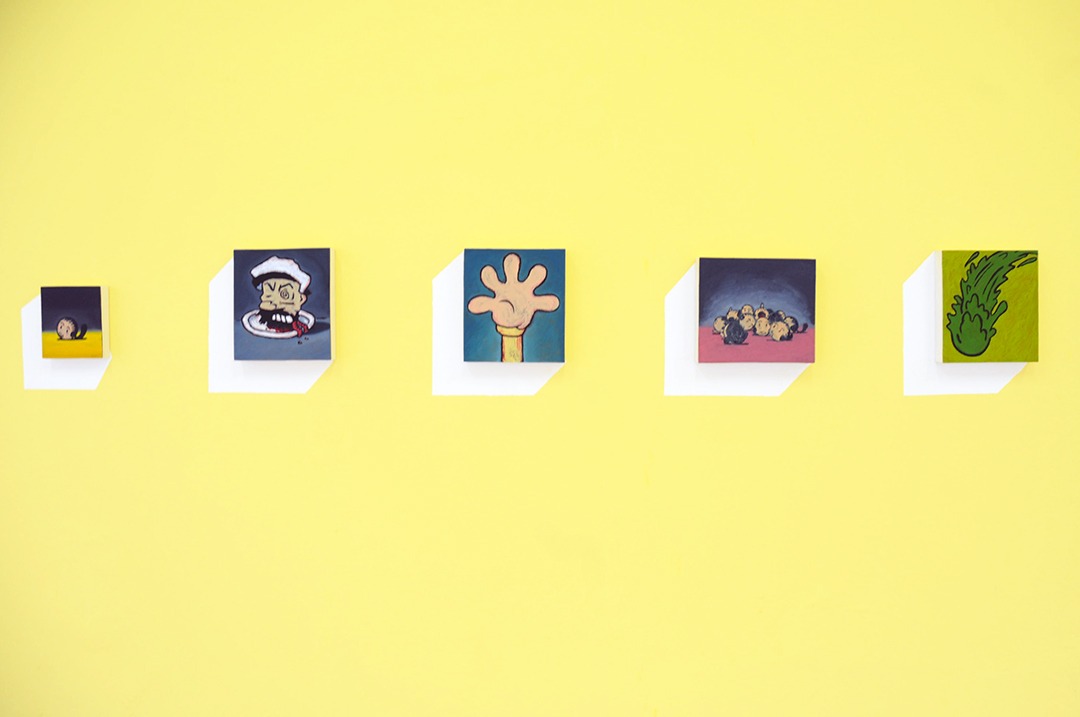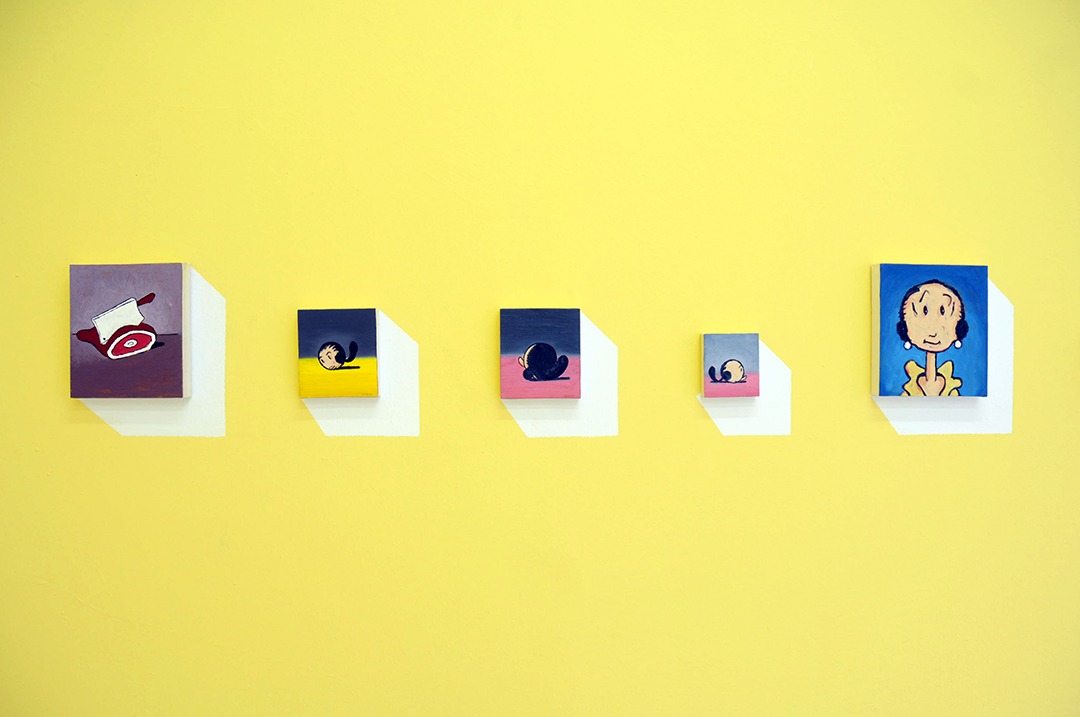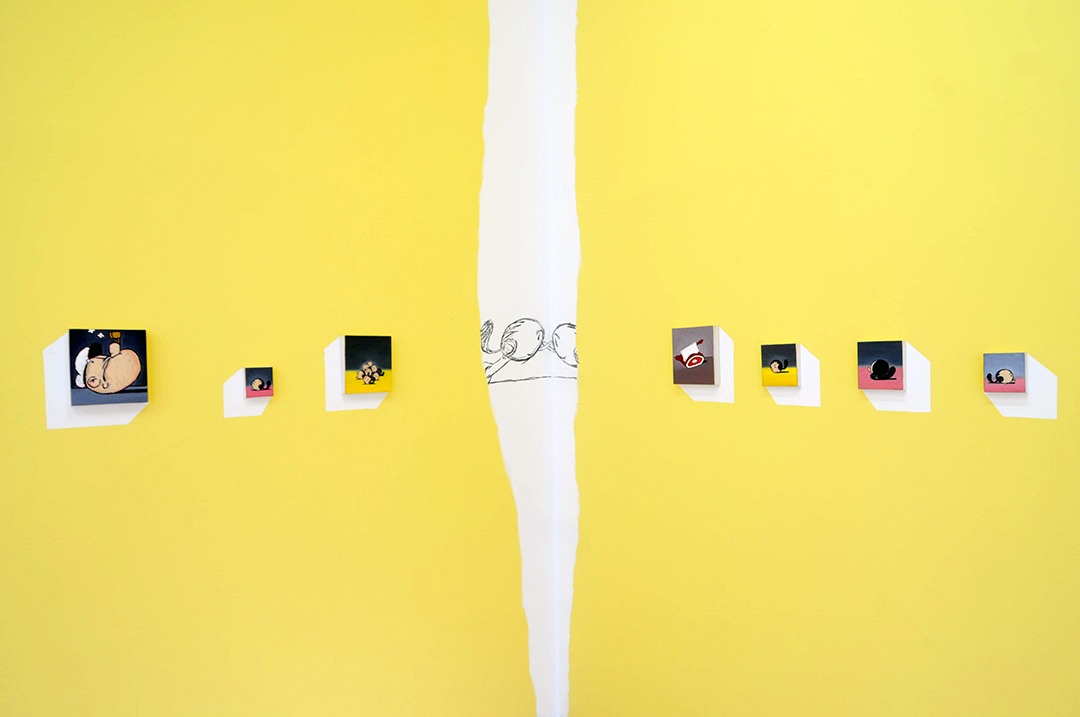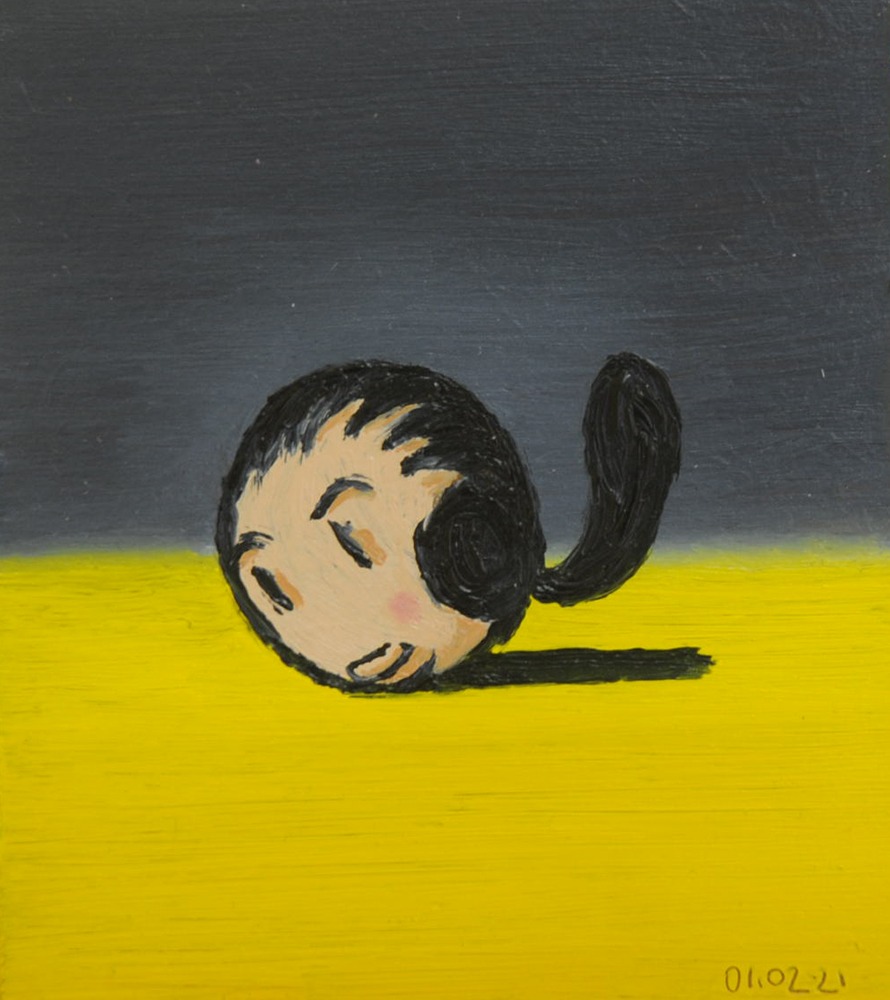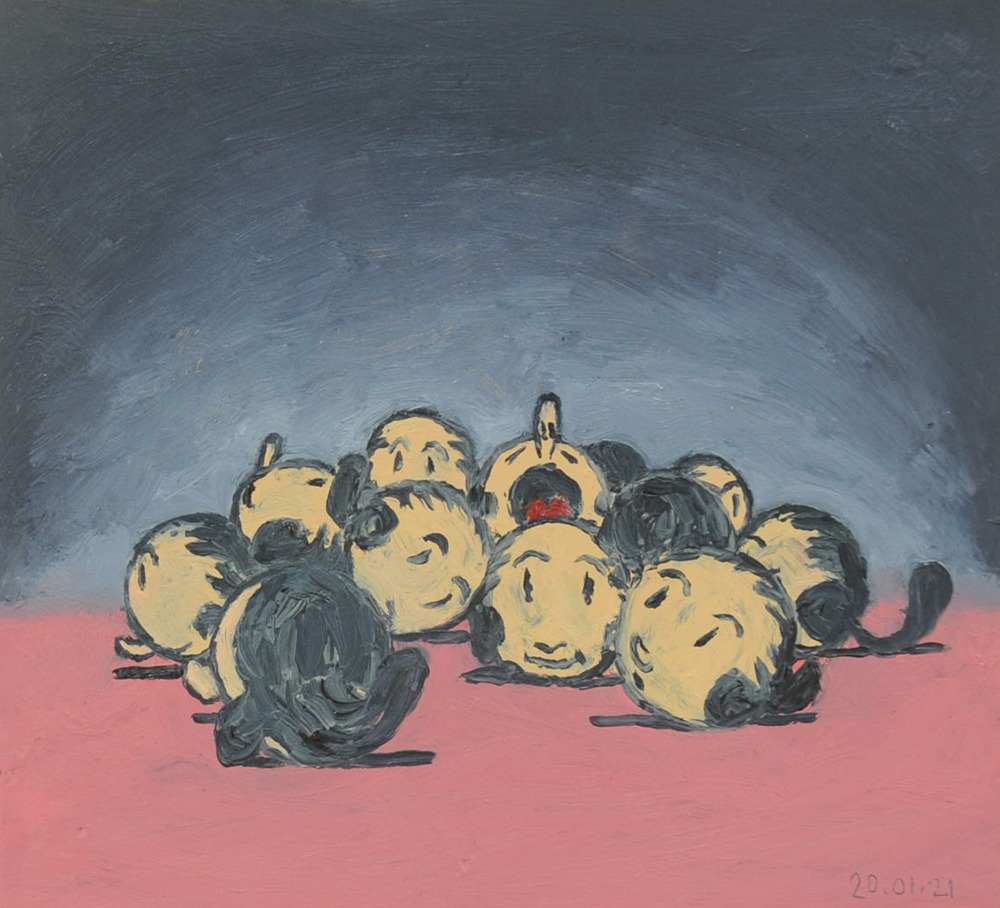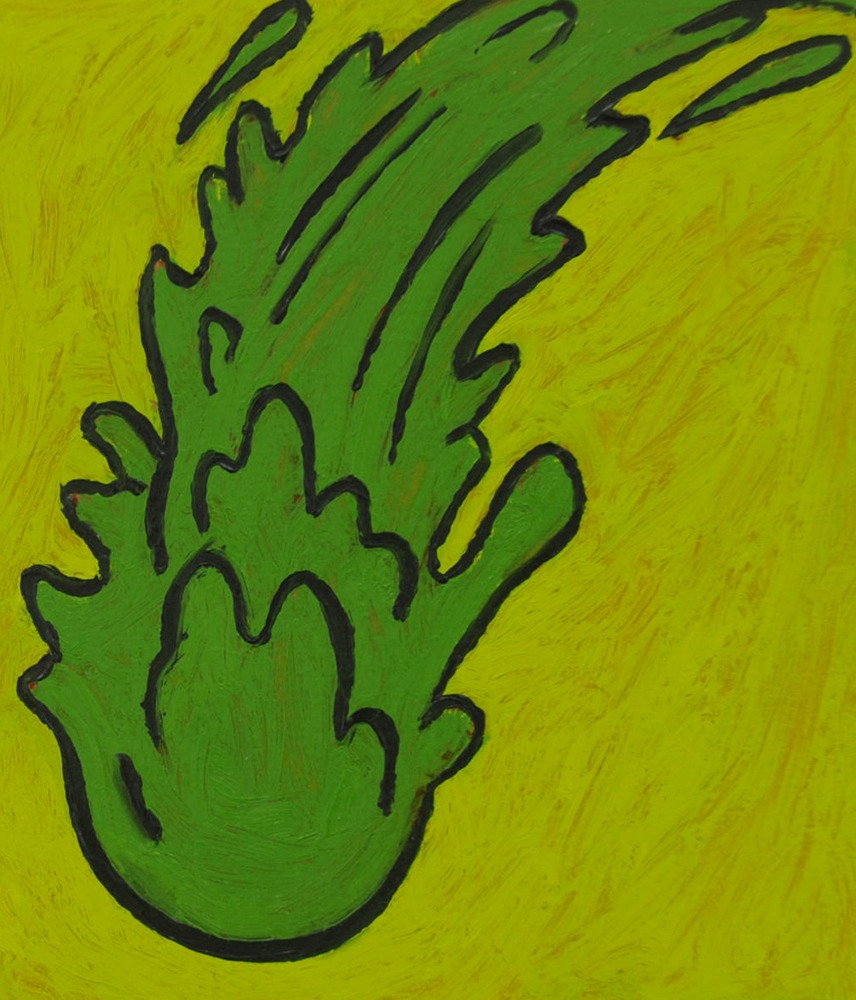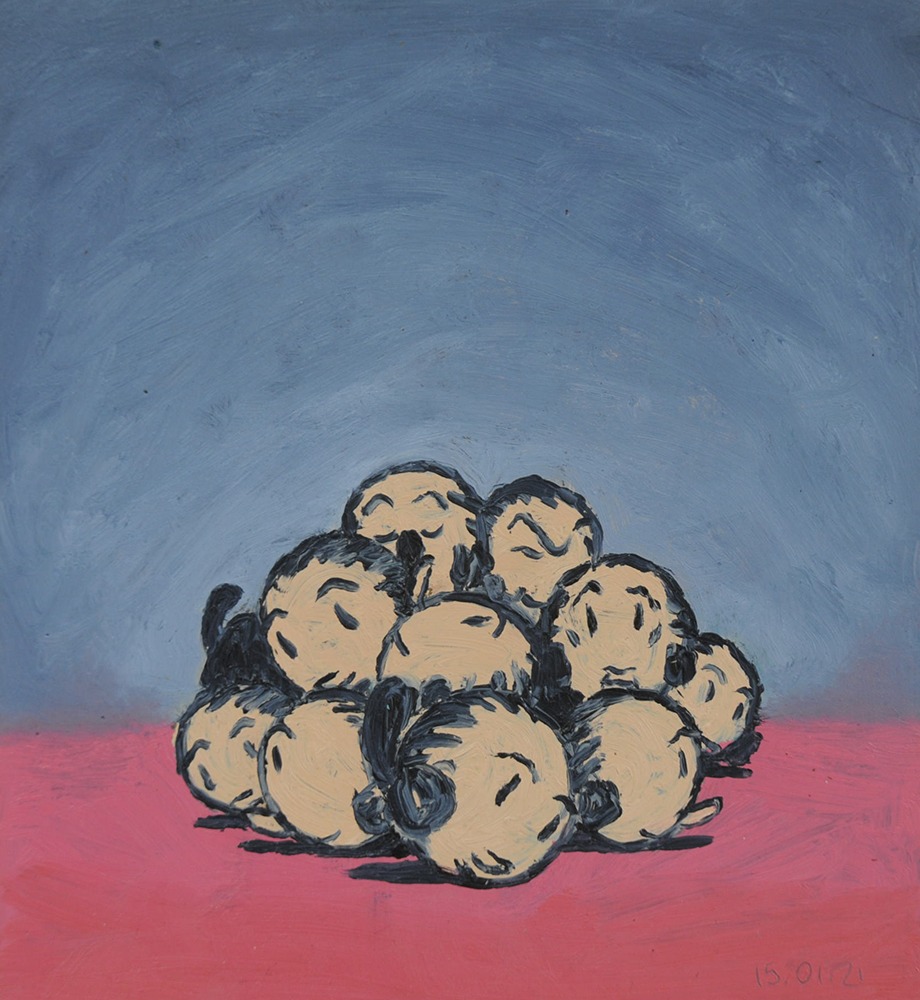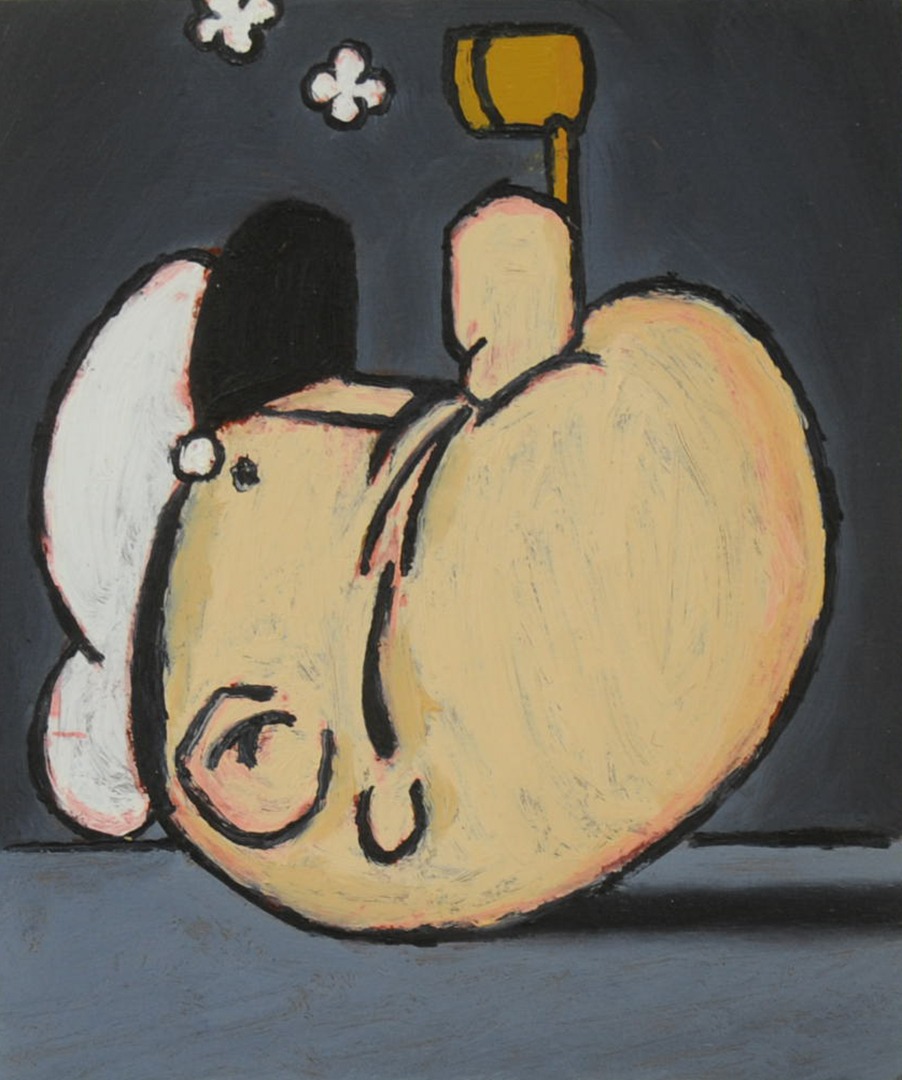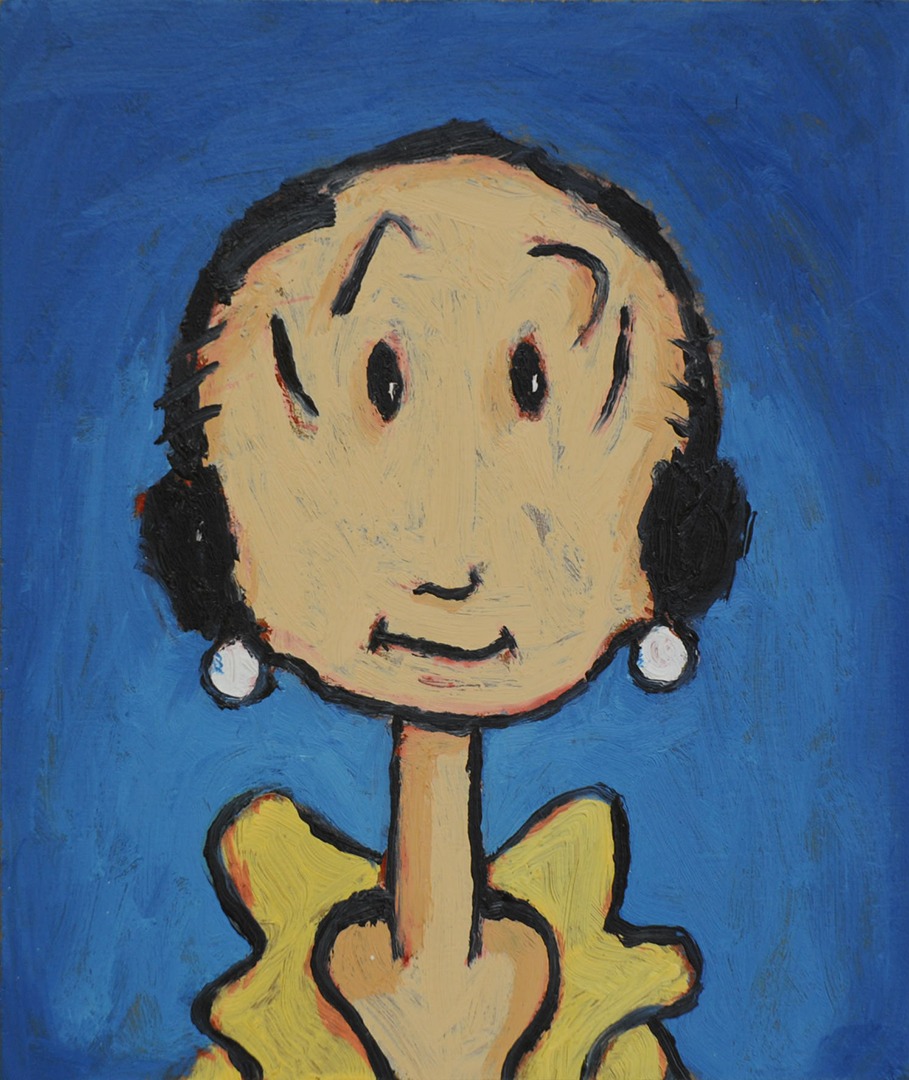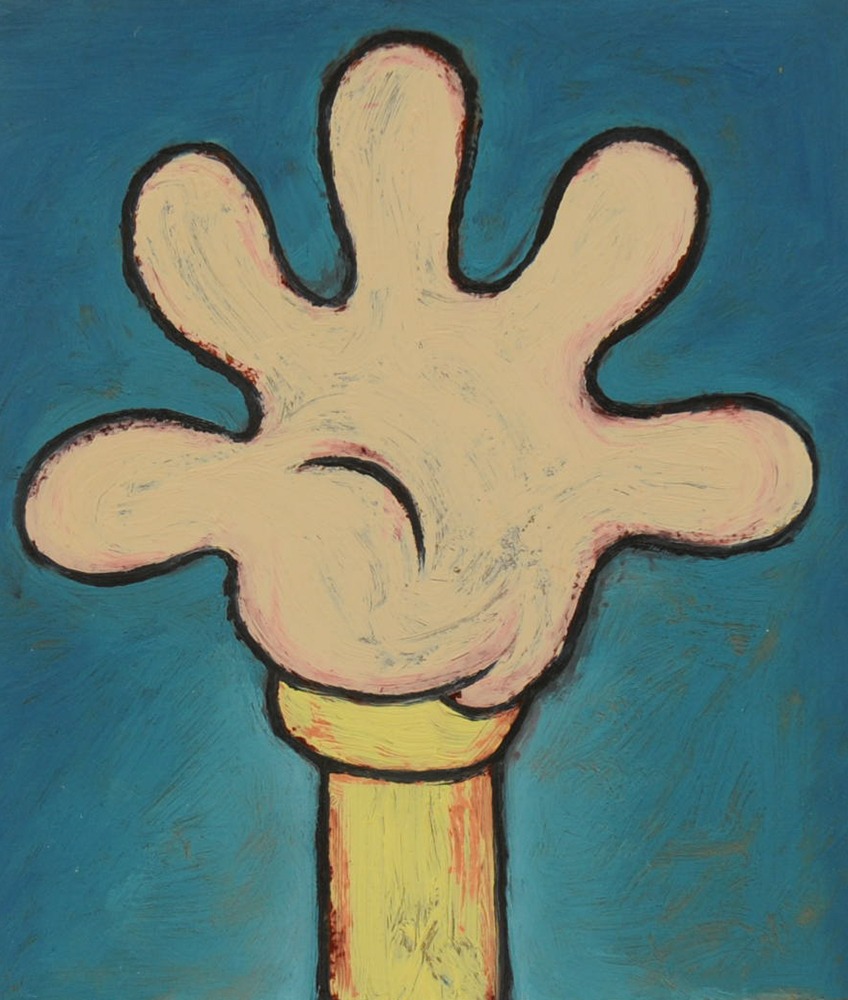Past
Toby Ursell
Oyl Paintings
At the beginning of most books, we find the Epigraph: a thoughtful thank you to friends, partners and missed people. Sometimes, there is a quote often taken from historic text that hint at the author's linguistic prowess or emotional empathy towards the great works. These Epigraphs offer a small peek at the author and what they think they are made of.
In Toby's work, we find the elements of the Epigraph writ large, simultaneously giving us his thank yous and a quote. The monumental text he has chosen to quote is Popeye, its characters in no need of an introduction. Like Shakespearean roles, Popeye and Friends are ripe for reconfiguration. As simple cartoon figures, their forms become malleable, the lines they are made up of becoming a ruse, a masquerade.
Similarly, Toby's thank yous are not straight forward; the thank youd becomes nods to other artists' works. We find Olive Oyls piled up and rolling around the surface, much like Philip Guston's overripe cherries. There are multiple nods to the canon of history painting, Bluto's head dismembered, is that of Holofernes’s severed head Gentileschi's paintings, or is Caravaggio’s ‘Goliath’?
These works feel quick, paint is urgently applied to already wet paint. The initial flippant quickness of these works is a sleight of Toby's hand: he is tricking us. He is utilising speed to minimise finesse, but by painting things we 'know', he makes us as viewers slow down. We remember the characters. We slow again when we find hints and references to other works that the artist has placed within the work. These references act like a banana peel or a tin of spilt spinach, and we trip upon them. Marks become discordant and misleading, but ultimately playful.
These paintings feel like the product of this confusing and puzzling time. In a world where we have sanctioned exercise, we, like Toby, force fun or playfulness into our days. Toby's playfulness can be found in multiple ways in each painting, from the colour choices, the size of the work through to the flippant gestures, for example, the swipe of a brush that makes Olive's eyebrow in ('Olive Blossoms') this seemingly carefree mark echoes that of the ominous crows from Van Gogh’s last landscapes. In this collection Olive Oyl’s face is repeated; its original meaning misremembered; her beautiful head, becoming multiple. Cherries, paint, planets and then Olive.
Casper White


